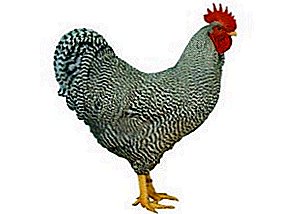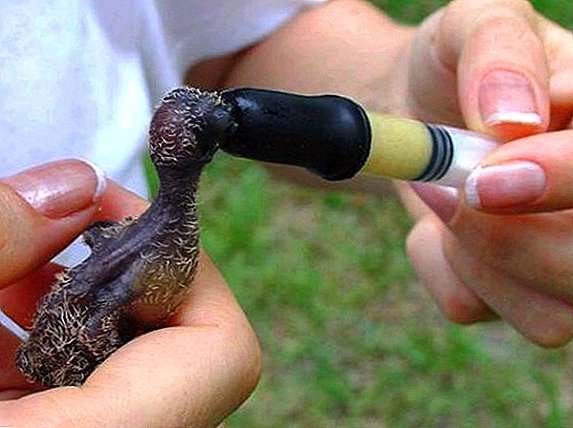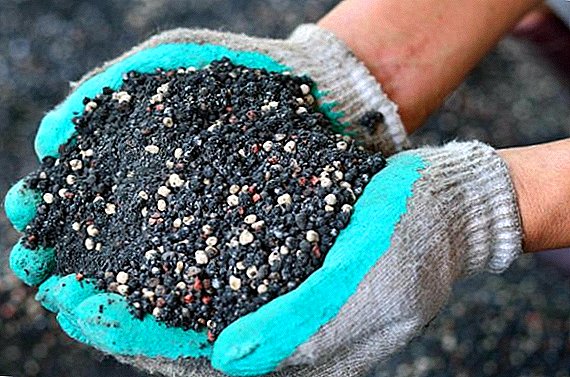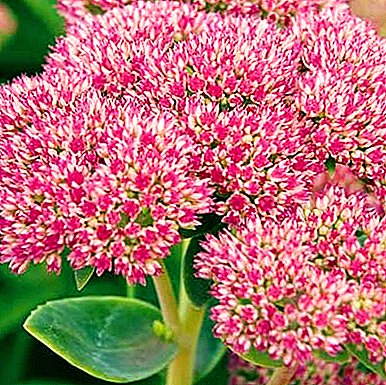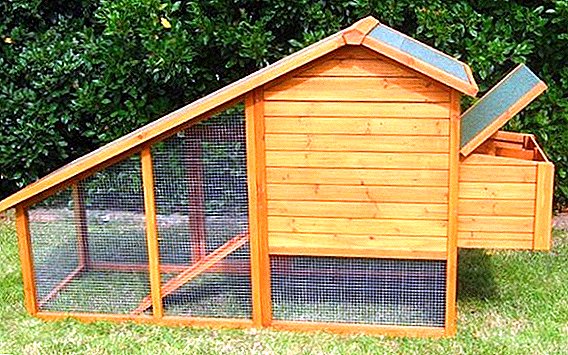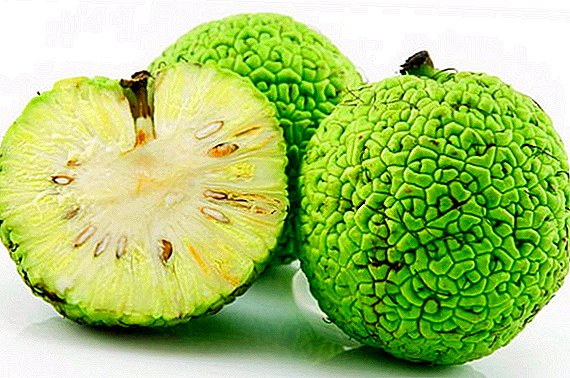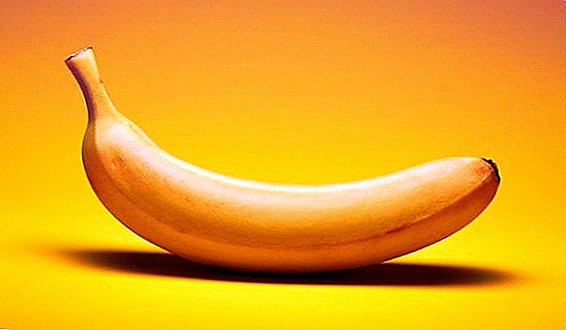
"Lemon" (alternative name - "Picasso") is a potato variety bred in Holland. According to maturity, it belongs to mid-late varieties.
Its peculiarity lies in the fact that the type of harvest can be completely different: different size of fruits, taste, yield of potatoes, etc. It is widely distributed in Ukraine, in Belarus.
Lemon Potatoes: variety description
| Grade name | Lemon (Picasso) |
| general characteristics | Dutch mid-season table potatoes tolerate drought and high temperatures |
| Gestation period | 110-130 days |
| Starch content | 10-12% |
| Mass of commercial tubers | 80-140 gr |
| The number of tubers in the bush | up to 20 |
| Yield | 200-500 c / ha |
| Consumer quality | normal taste, suitable for salads and frying |
| Recumbency | 90% |
| Skin color | yellow with pink splashes |
| Pulp color | cream |
| Preferred growing regions | Central, Central Black Earth |
| Disease resistance | susceptible to NTN-virus, moderately resistant to late blight over the leaves and leaf curl virus, resistant to all other potato diseases |
| Features of growing | pre-germination recommended, requires increased fertilizer rates |
| Originator | AGRICO U.A. (Holland) |
Powerplant sprawling bushes with a thick tall stem. The leaves are dark green in color and medium in size.  In the period of flowering on the plants appear small flowers, usually white.
In the period of flowering on the plants appear small flowers, usually white.
Fruits are either small or medium-sized, unequally-shaped, resemble a pear. The skin of the potato is light brown or yellow with small pink eyes.
Inside the fruit, the flesh is colored lemon-yellow (hence the name), moderately juicy and sweet. During periods of drought, the fruits have a tart taste.
Since the Lemon potato belongs to the middle-grade varieties, the potato only begins to ripen only in late August - early September (usually during the Indian summer).
Fruit ripening takes place at one time.therefore, their consumption may take 12-15 days.
By weight, one tuber can reach 100-120 grams. Starch content in it does not exceed 10%, which is a relatively small figure compared with other varieties, and the number in the bush often reaches 20 pieces.
You can compare this figure with the same for other varieties using the table below:
| Grade name | The number of tubers in the bush |
| Picasso | up to 20 |
| Jelly | up to 15 |
| Typhoon | 6-10 pieces |
| Lilea | 8-15 pieces |
| Tiras | 9-12 pieces |
| Elizabeth | to 10 |
| Vega | 8-10 pieces |
| Romano | 8-9 pieces |
| Gypsy | 6-14 pieces |
| Gingerbread Man | 15-18 pieces |
| knapweed | up to 15 |
Characteristic
Lemon Potatoes pretty unpretentious. It is undemanding to soils, therefore it is suitable for planting in the most diverse areas of Russia and other countries.
To the merits of the variety can be attributed to high precocity. As for the yield, at first its indicators may vary, but after 8-9 years the stability is improving, and the numbers reach quite high levels of 200-500 centners per hectare.
In the table below you can get acquainted with such indicators as the quality and yield of potatoes of different varieties:
| Grade name | Yield | Recumbency |
| Picasso | 200-500 c / ha | 90% |
| Bullfinch | 180-270 c / ha | 95% |
| Rosara | 350-400 c / ha | 97% |
| Molly | 390-450 c / ha | 82% |
| Luck | 420-430 c / ha | 88-97% |
| Latona | up to 460 c / ha | 90% (subject to the absence of condensate in the storage) |
| Kamensky | 500-550 | 97% (previously germination at storage temperatures above + 3 ° C) |
| Impala | 180-360 | 95% |
| Timo | up to 380 kg / ha | 96%, but the tubers germinate early |
The potato variety Lemonka is a quite unpretentious plant, therefore the requirements for its care can be minimal. The only thing that needs to be considered when planting it - the distance between the holes.
Because of the spreading branches, the gaps should be 45-50 cm long from each other. If this rule is not followed, the bushes will block each other, preventing sunlight from penetrating, which can lead to the death of plants.
As for the agricultural practices, they are standard. You can use the hilling of the bushes - manually or with the help of a walk-behind tractor, mulching between rows, watering, and planting fertilizer.
 Also allow you to offer useful information about how to feed potatoes, when and how to apply fertilizer.
Also allow you to offer useful information about how to feed potatoes, when and how to apply fertilizer.And also how to do it when planting and which are the best feeding.
A photo
See below: Limonka potato variety photo





Diseases and pests
This variety has another significant advantage over others: Lemon potato resistant to all sorts of viruses and diseases.
These include:
- scab;
- late blight tuber;
- crayfish;
- potato nematode;
- Alternaria;
- Fusarium;
- Verticilliasis
However, the plant is susceptible to late blight and leaf twisting virus.
As for pests, the Colorado potato beetle and its larvae, wireworms, honey bears, potato moths are most often dangerous to potatoes. But they can be found on the board.
Read more about how to deal with them:
- How to get rid of the wireworm in the garden.
- We destroy the Medvedok by folk methods and chemical preparations.
- Fighting potato moths: chemistry - part 1 and part 2.
- All about the fight against the Colorado potato beetle - folk methods and industrial means:
- Aktara.
- Corado.
- Regent.
- Prestige.
Application
 Potatoes have high taste characteristics.
Potatoes have high taste characteristics.
Due to the moderate razvarivaemosti variety of potatoes Lemon used in the preparation of various dishes: from traditional boiled potatoes to tender mashed potatoes.
Tubers are able to maintain their marketable appearance for quite a long time, so the product is highly demanded in the markets and in supermarkets.
Read more about the storage of potatoes, the timing and temperature, the conditions in the vegetable store, the problems that arise. And also how to store roots in the winter, in the apartment and cellar, on the balcony and in boxes, in the refrigerator and peeled.
It is known that Russians prefer "white" potatoes to "yellow". However, "Limonka" is a very common variety in Russia, especially in the Central and Central Black Earth regions.
Conclusion
Summing up, we can say that the potato variety Lemon is an excellent choice for planting in your garden.
Due to its unpretentiousness, the plant is able to bloom and bear fruit in a variety of conditions, successfully resisting all kinds of diseases. And his taste will not leave anyone indifferent culinary.
On our site you will find a lot of useful information about a variety of methods of growing potatoes. You will learn what Dutch technologies are, how to properly care for early varieties and get good harvests without weeding and hilling and make a good business plan for growing potatoes as part of a business. We will also introduce you to such methods: under straw, from seeds, in bags, in barrels, in boxes.
Below in the table you will find links to materials about potatoes with different ripening terms:
| Mid-season | Medium early | Middle late |
| Santana | Tiras | Melody |
| Desiree | Elizabeth | Lorch |
| Openwork | Vega | Margarita |
| Purple Haze | Romano | Son |
| Yanka | Lugovskoy | Lasock |
| Tuscany | Tuleyevsky | Aurora |
| Giant | Manifesto | Zhuravinka |


